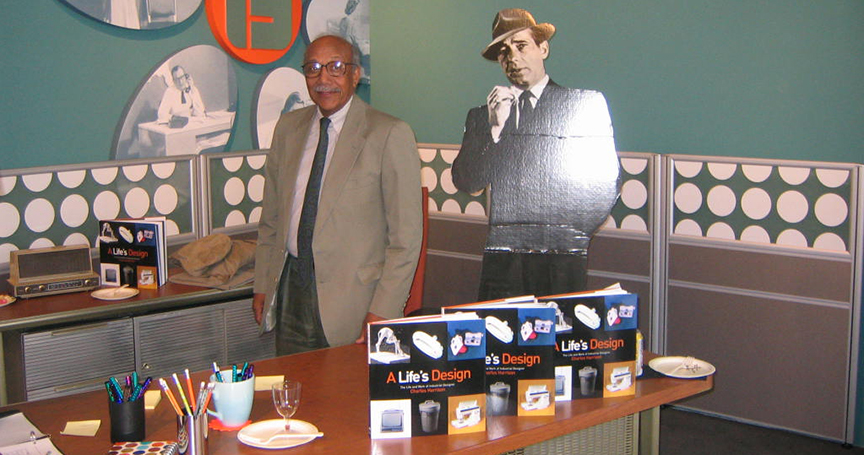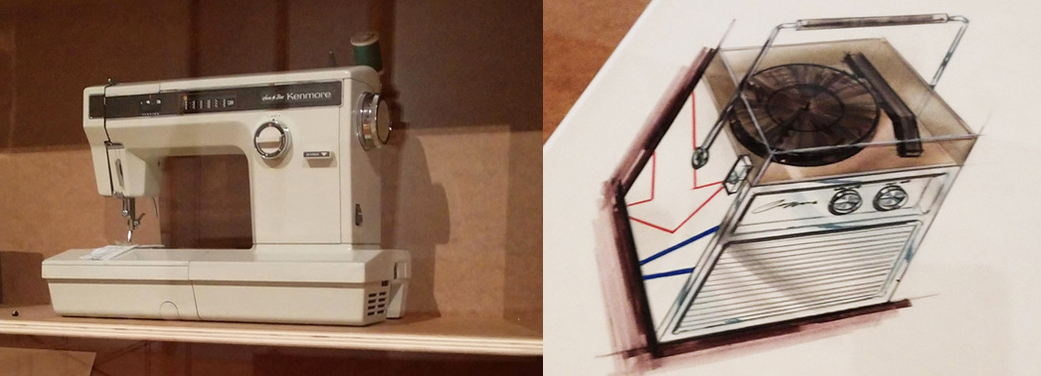IDSA mourns the loss of a long-standing member Charles (Chuck) Harrison. He leaves behind an extensive design legacy and an expansive body of work that spans decades. Much of Harrison’s career was spent working for Sears Roebuck & Company, beginning as a freelancer, then as a staff designer and later as the head of the company’s design department. A prolific designer, Harrison’s work touched almost every area of household products from cribs to tractors and everything in between. He is also known for his pioneering role as one of the first African-American industrial designers of the era and the first to lead a design department at a major corporation.
He executed more than 700 designs, a significant number of which were highly successful in the marketplace. Two of his most iconic designs were the redesign of the View-Master in 1958 and the first-of-its-kind plastic refuse (trash) can designed in 1963. The View-Master quickly became a worldwide success as a toy. His design sold with only minor color changes for over 40 years and could be found in almost every US household and households throughout the world.
Harrison holds a BFA in industrial design from The School of the Art Institute of Chicago (1954) and an MS in art education from the Institute of Design (1963).
In his 2016 autobiographical career retrospective, A Life’s Design, Harrison writes:
“I came from a family that taught me to see beyond circumstance, find value and create usefulness out of need. The legacy I inherited required that I make myself useful ‘ as a son, man, husband, father and artist. If I were to share one thought with the design community of today and tomorrow it would be to remember that your purpose ‘ your gift to the world ‘ is to provide straightforward solutions to real problems for living, breathing human beings. As an industrial designer especially, your audience is neither history nor fame, but a couple who worked hard to buy their first home on a quiet street and would love just one more hour of sleep in the morning, even on trash day. Your muse is the kid who needs something to occupy his mind and hands during that long drive to grandma’s house. Your biggest critic will be the struggling mother who can’t afford to keep replacing her kitchen appliances every time a little piece of ornate, but useless, piece of plastic breaks off.”

Throughout his career, Harrison was continually recognized by the design community through awards and exhibitions featuring his work and contributions to the profession. Notable accolades include:
- 2000, “The World of a Product Designer: Charles Harrison” – Carver Museum and Cultural Center (Austin, TX)
- 2006, Personal Recognition Award – Industrial Designers Society of America
- 2007, “Designs for Life, Black Creativity” – Museum of Science and Industry (Chicago, IL)
- 2008, National Design Award, Lifetime Achievement – Cooper Hewitt
- 2009, Honorary Doctorate degree – The School of the Art Institute of Chicago
- UIC Osmosis Charles Harrison Scholarship– Bridging creative excellence identified in Osmosis minority youth programs with mentorship and financial support for college level design studies – The UIC School of Design and Project Osmosis.

Perhaps most of all, Harrison is remembered as a warm and compassionate person to those who knew him. In the days following his passing, friends and colleagues share their reflections on their experiences with him.
Troy Rodman writes, “I always remember Chuck having a warm, soft spoken, calm presence and always a delight to talk with. In the old corporate days, when structure and protocol was so strict, Chuck seemed to maintain a calm presence as he navigated this world. He discussed the fact that it was not easy as a designer or even one of color, but he prevailed given his warmth, charm and ability to work well with everyone. He traveled the world with Sears and accomplished much.”
Nancy Perkins, FIDSA shares, “Chuck Harrison became my boss at Sears and it was a delight to work with him; incorporating his guidance on projects, personalities and situations. That guidance was invaluable. I was always told that Chuck was a ‘legend’ because he was the first African American person hired in a salaried position at the company. Given the timeframe of when he was hired, 1961, years before the height of the civil rights and affirmative action eras, speaks to his outstanding talent and personality; the qualities a trailblazer must have in order to break barriers. His example in the industrial design community, his tenaciousness, talent and sharing personality has made us a much better profession.”
Bob Schwartz, FIDSA remarked, “Chuck is a design legend and an absolute groundbreaker in a profession that still struggles with diversity.”
Other resources:
Today – A Life Well Lived
Core 77 – America’s Most Prolific African American Industrial Designer (2013)
Design Week – Interview (2013)
Wikipedia – Profile
The New York Times – Obituary
vimeo – interview
